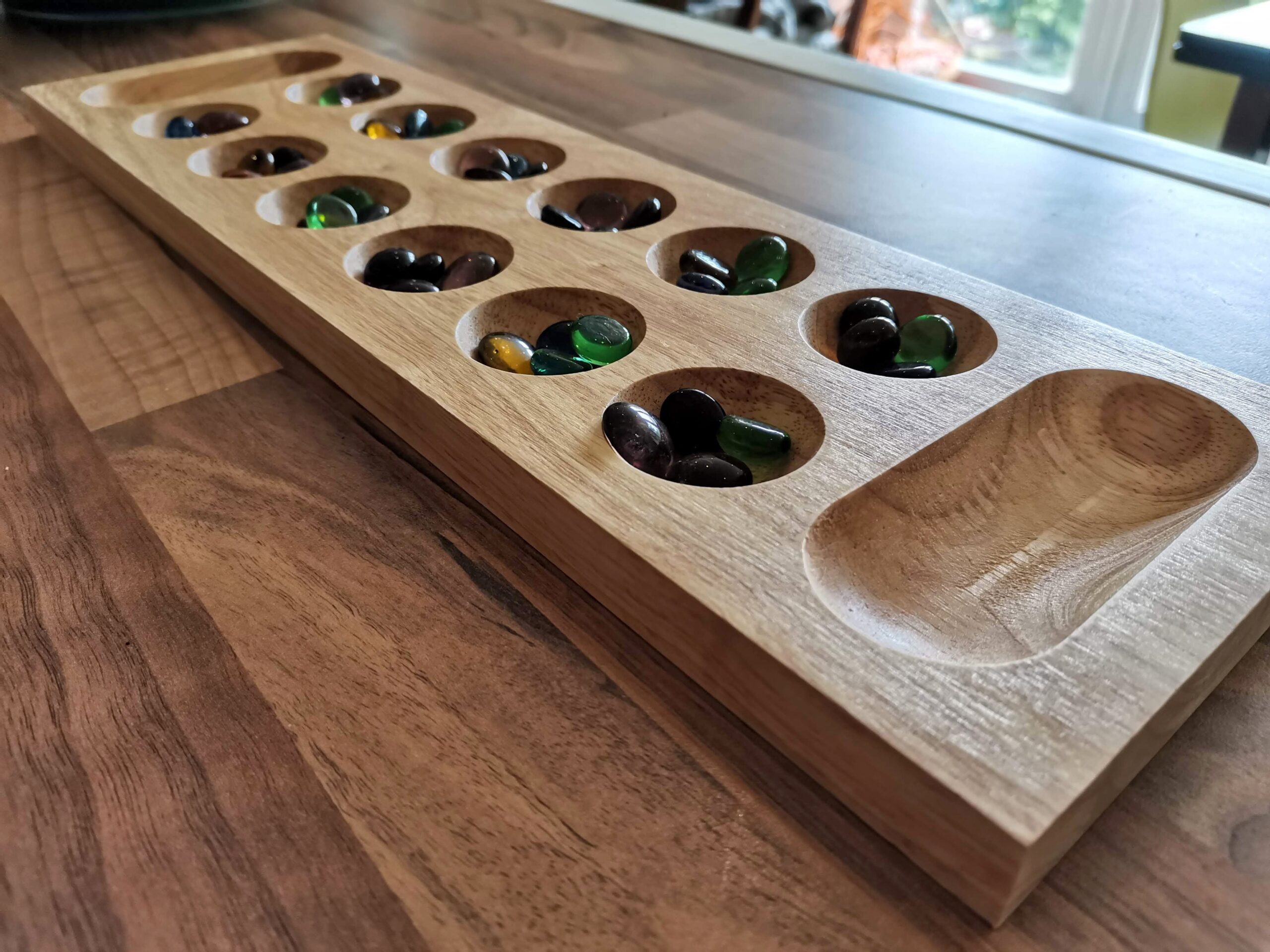Terraforming Mars: Ares Expedition Review
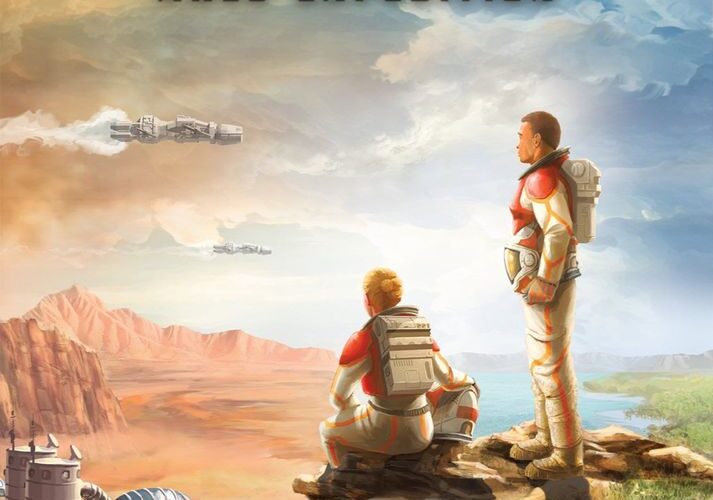
Mars is pretty prominent in the public eye at the moment. We’ve got multiple robots trundling across the planet’s surface, a helicopter taking sightseeing trips across the dusty red vistas, and it’s long been a favourite of science fiction. From Total Recall to The Martian, the idea of humans living on Mars has captured our imagination. Games have helped us live out that fantasy, whether digital or physical. A quick look at my shelves and I can see three games already: Terraforming Mars, On Mars, and First Martians. We can’t seem to get enough of it, and that’s good news, because a fourth game recently joined them – Terraforming Mars: Ares Expedition.
As you might have guessed, Terraforming Mars: Ares Expedition is a game in the same family as the original board game, Terraforming Mars. This latest game gives itself the label of “The Terraforming Mars Card Game”, which is a bit of a misnomer if you ask me, because it’s no more of a card game than the original game was. Sure, there was a board in Terraforming Mars, and tiles on it, but the same is true of Terraforming Mars: Ares Expedition, albeit with a smaller board and fewer tiles. So what – you may be asking yourself – is the point of this new game?
Footprints in the dust
The biggest, and most immediately apparent change, is the size of the game’s footprint. It comes in a pint-sized box, and the main board is tiny. If you’ve ever suffered with the sprawl of the original game, or fancy playing in a café or pub, then Ares Expedition is immediately a much better option.
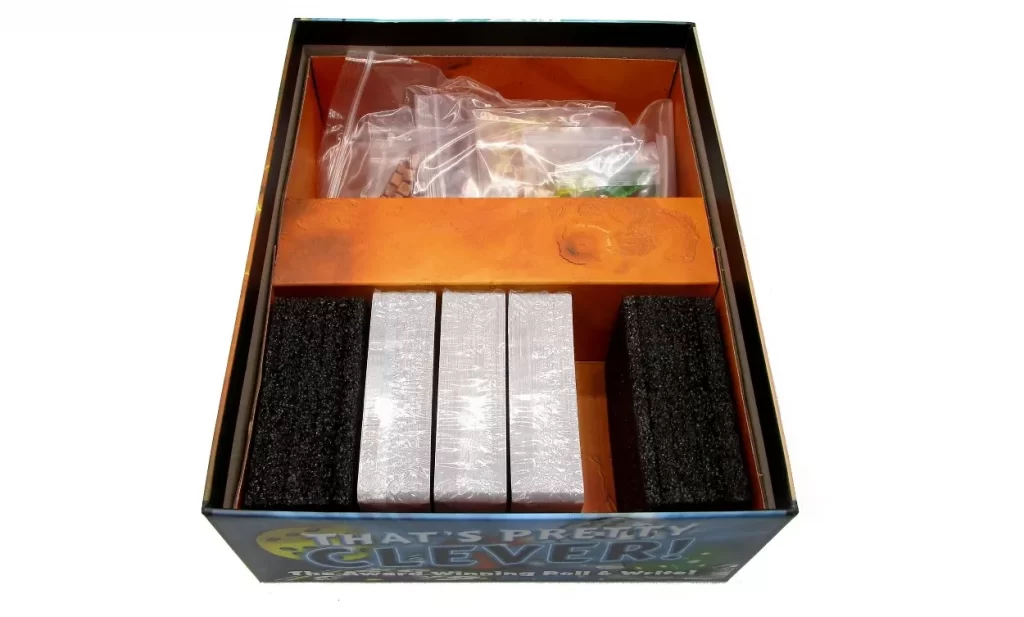
I always worry when I see a new version of a game being released, when it looks like a cut-down or simplified version of an existing game. It’s completely irrational, because many of these games make the transition brilliantly. Just look at Troyes Dice, Castles of Burgundy: The Dice Game, or even 7 Wonders: Duel. But Terraforming Mars is special to me. It’s one of the first big box games I bought when I got back into the hobby, and playing it always feels like a bit of an experience. So when I saw a small box trying to capture the same feeling and flavour of its predecessor, I had reservations about it. I needn’t have, Terraforming Mars: Ares Expedition is good. It’s very good. I think I might even prefer playing it to the original game.
Shedding weight for lift-off
If you ask anyone who’s played Terraforming Mars a few times what their biggest gripe is, you’re likely to hear a couple of different complaints. The biggest grumble is around the sheer number of different cards in the game. Everdell suffers from a similar problem, where you know you’ll never get through the entire deck, and it makes planning difficult. You can easily end up with a handful of cards that you don’t really want, and get precious little reward for getting rid of them. The only way to discard them in the original game was to use one of your actions to sell them for 1MC (the game’s currency) each.
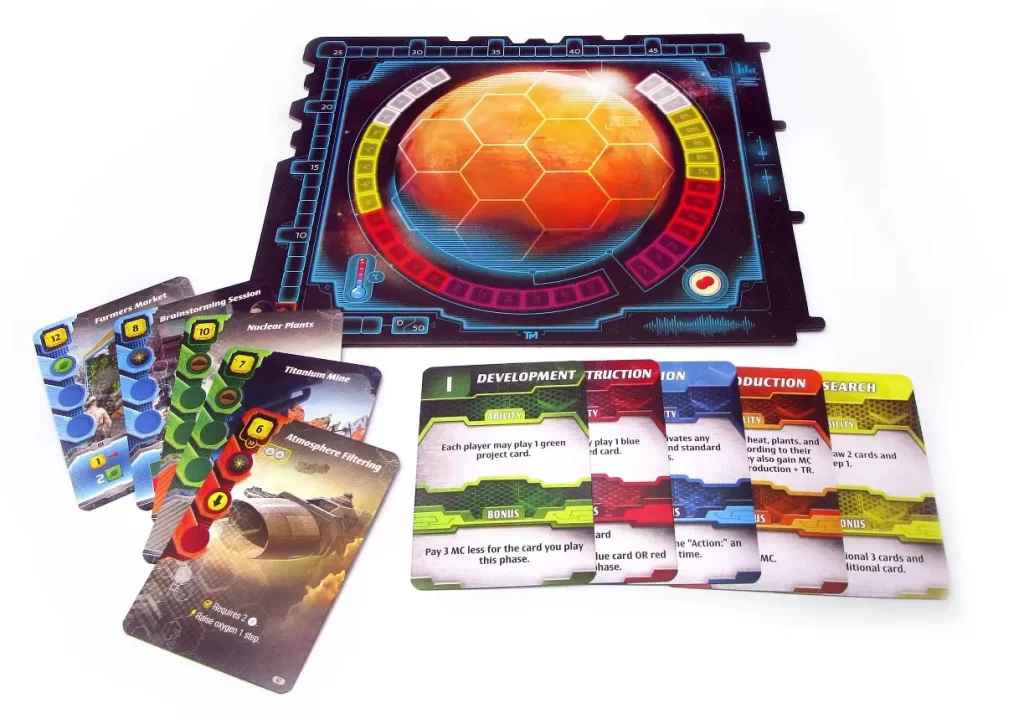
Terraforming Mars: Ares Expedition makes a great change which goes a long way towards fixing this problem. During the game you can ‘spend’ any unwanted cards when purchasing other cards, for 3MC each. This is great, because you don’t need to use an action to convert them to cash, and you end up with a decent amount of extra spending money. Getting rid of five cards in the original got you 5MC, but now those same five cards give you 15MC towards something you want.
If you’ve played the original game, just reading that is enough to make you feel happy. It’s a really welcome change that makes unwanted cards useful, and helps keep the speed of the game up.
Action stations
The biggest change between the parent game and its offspring is the way actions are performed. There are five actions available in the game, and instead of just choosing which you want to do on your turn, you now have five action cards. All players choose one face-down at the start of a round, and then flip them at the same time. The actions revealed are then carried out in a specific order, and all of the actions are available to all of the players. The kicker is that although everyone can carry out every action, the person (or people) who chose that action get an additional bonus.
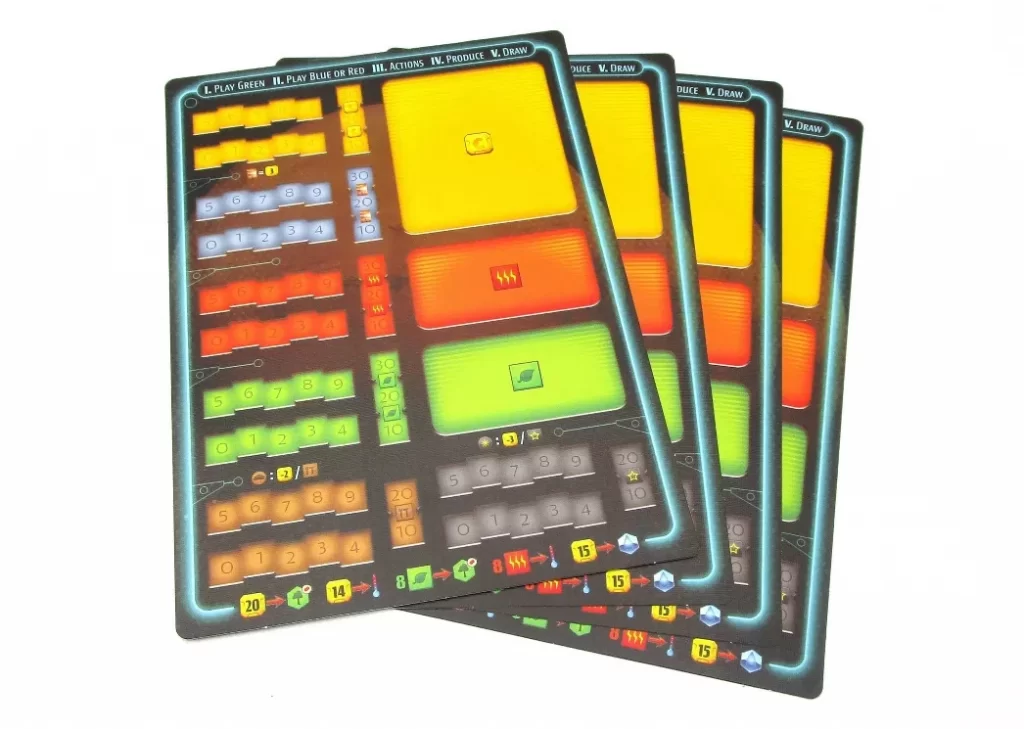
It’s a really nice mechanism, and it makes the game far more interactive than the original. Terraforming Mars is a real heads-down experience, with each player working on building their own little engine. There’s no real way to impact or influence the choices other players have on their turn. Now though, in Ares Expedition, you can start playing meta games with the other players around the table.
If you notice someone has no money or resources, you can gamble that they’re going to choose production in the next round, meaning you get production too. Then you can afford to develop a card. If they don’t choose that action though, and you don’t have enough in the bank, you can’t develop the cards you wanted – oh no, a turn wasted! Once all the players have a good grasp on how to play the game, these little mind games are great fun.
The Martian
If you’ve read Andy Weir’s book – The Martian – or seen the film with Matt Damon, you’ll know it’s about a lone man stranded on Mars. If you find yourself on your own with Terraforming Mars: Ares Expedition, then you’re in luck, as there’s a fully-fledged solo mode included. Following on from its forebear, it retains the same gameplay as the main game, but turns it into a timed puzzle. Make Mars habitable before the end of the turns and win. Anything else, you lose.
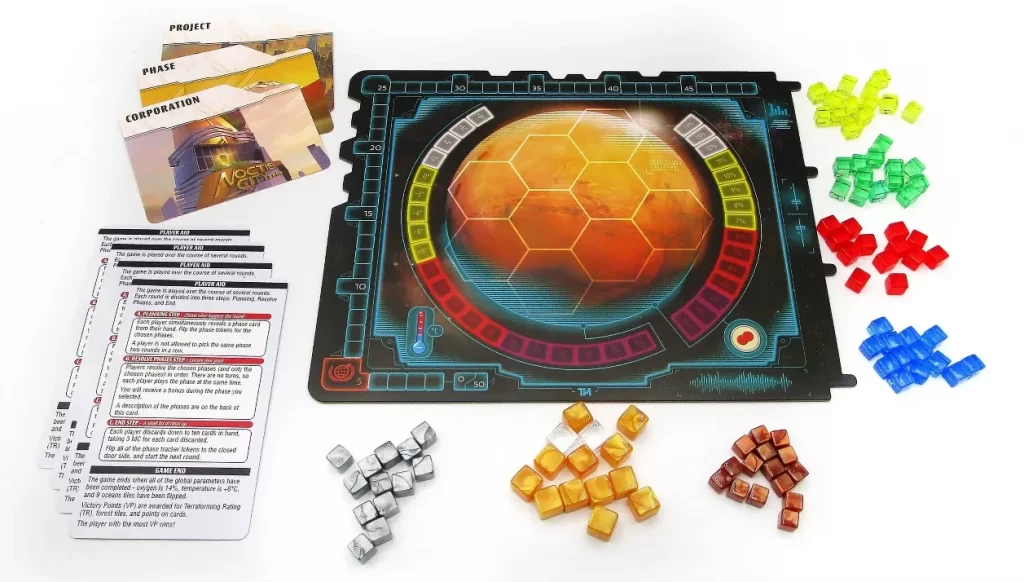
If you’ve played Terraforming Mars solo before, you know what to expect, and it feels very similar. If you’re after a solo mode that feels like playing against a real opponent however, you’re better off looking elsewhere. The best solo Martian experience in my opinion is On Mars, by Vital Lacerda, but that’s a much more expensive game.
Final thoughts
Terraforming Mars: Ares Expedition does a lot of things really well. It’ll inevitably draw direct comparisons to the original Terraforming Mars board game, but that’s okay, it’s meant to. There’s a quick start guide included in the box which points out the similarities and differences, so experienced players can dive right into the action.
The game does so well at capturing the feel of Terraforming Mars, while condensing it down into a more palatable, less unwieldly game. You’re still trying to increase the oxygen, temperature and ocean coverage of Mars, just like the original. The same corporations are present, the same resources generated and spent, and broadly speaking you’re doing exactly what you do in Terraforming Mars. It feels like Terraforming Mars, and somehow manages to compress the game down to half the time it takes to play. You can play a four-player game of Ares Expedition in an hour.
I’m not about to sell my copy of Terraforming Mars, because the expansions add so much to the base game. But if I want that hit of terraforming, I already reach for Ares Expedition now. The only negative thing I can find to say about it is that it feels like a weaker experience at two-player, but it’s still good fun. It’s just not as good as playing with three or four. Terraforming Mars: Ares Expedition is a brilliant game. It’s the distilled, refined spirit of Terraforming Mars, and I love it.
Review copy kindly provided by Stronghold Games. Thoughts and opinions are my own.
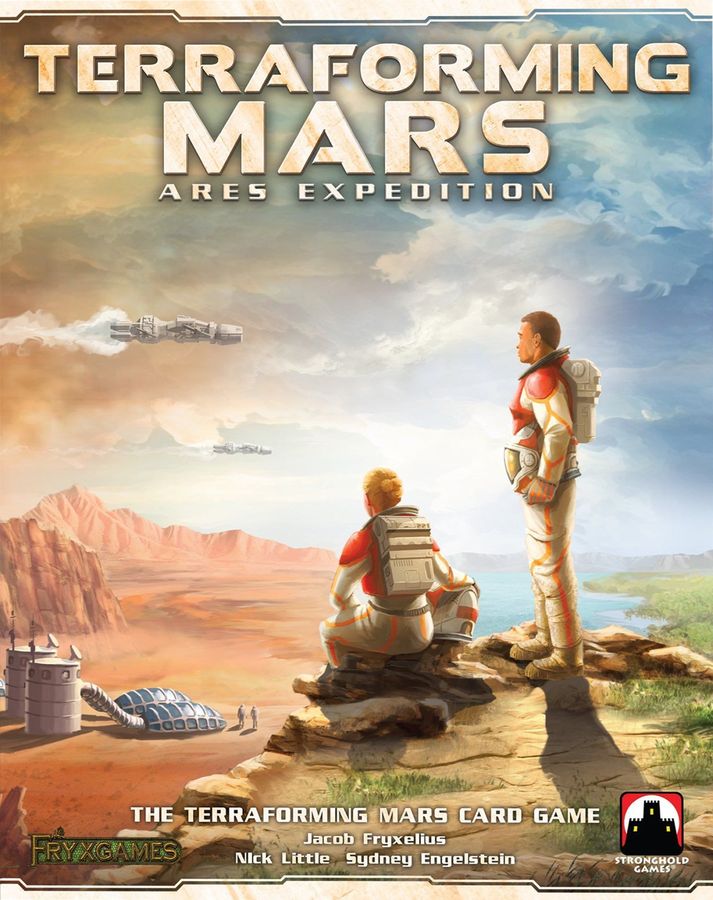
Terraforming Mars: Ares Expedition (2021)
Designers: Sydney Engelstein, Jacob Fryxelius, Nick Little
Publisher: FryxGames, Stronghold Games
Art: William Bricker, Garrett Kaida, Nio Mendoza, Justine Nortjé, Naomi Robinson, Andrei Stef
Players: 1-4
Playing time: 45-60 mins







